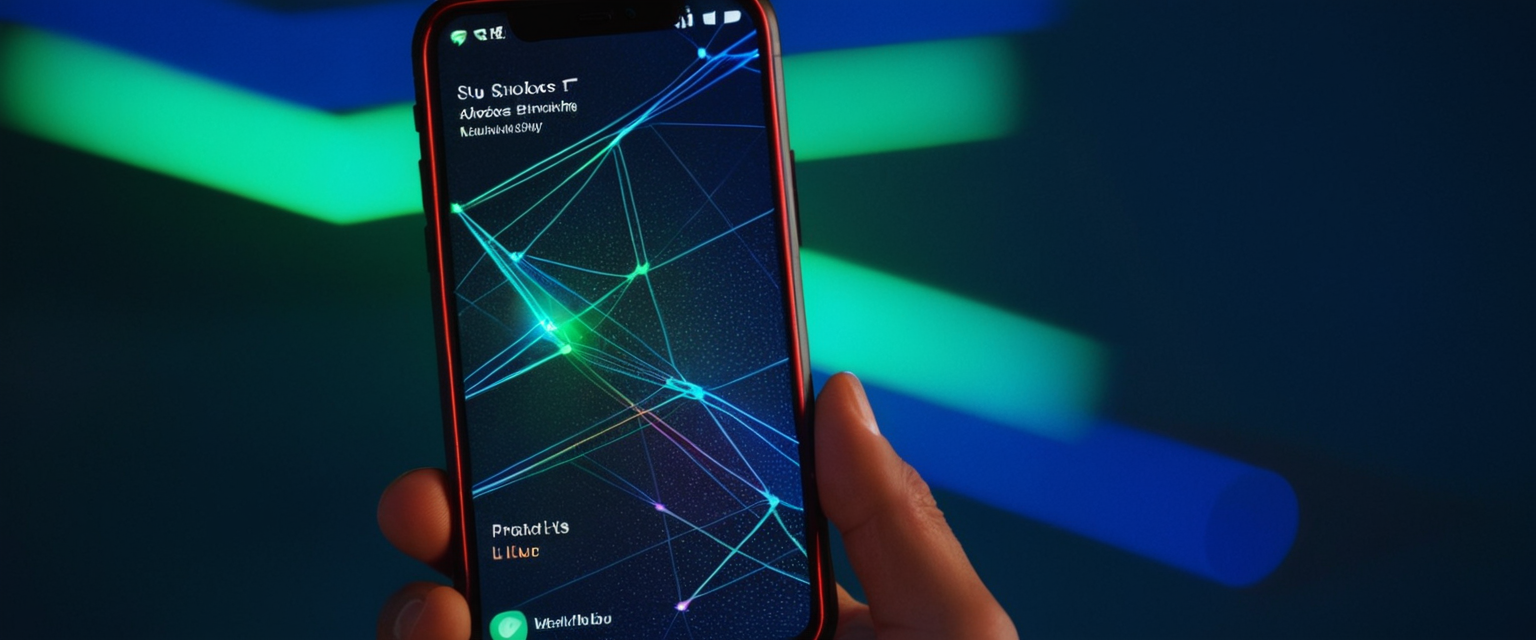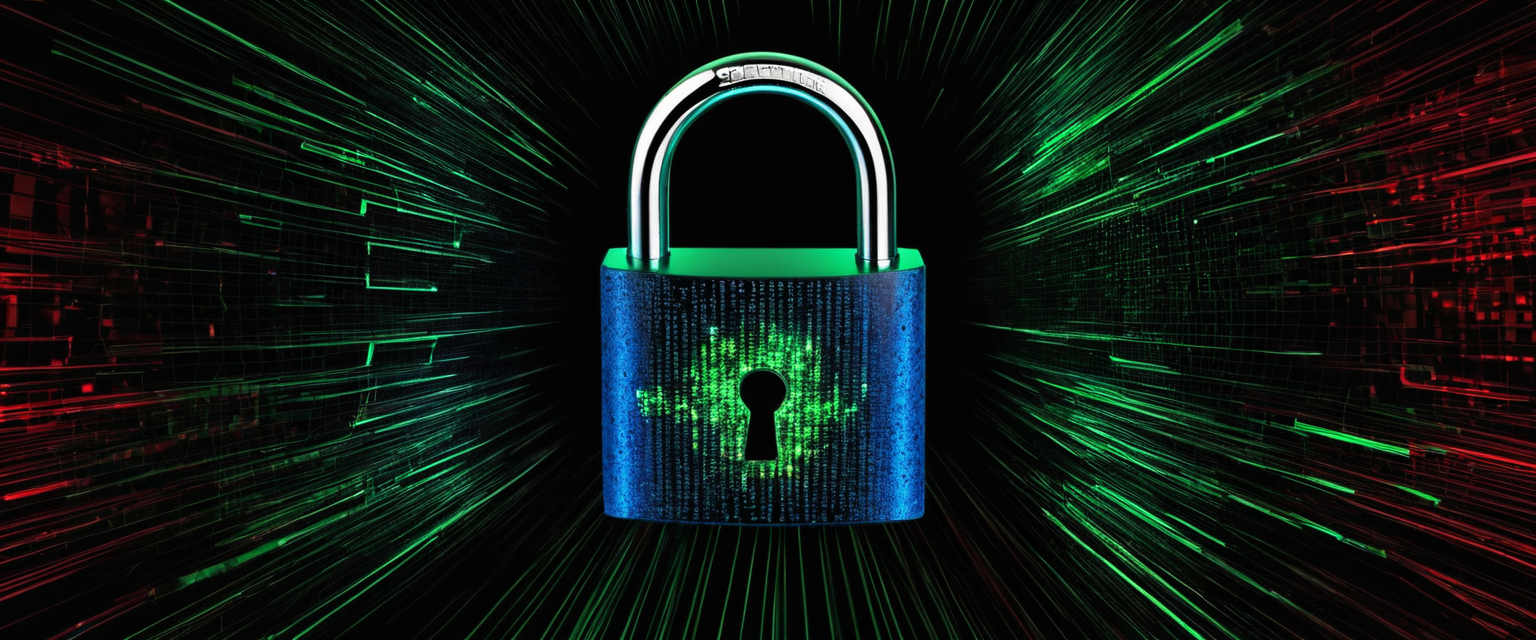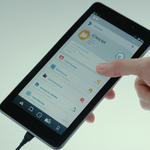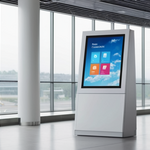
In contemporary digital ecosystems, smartphones have become indispensable personal devices that store an extraordinary amount of sensitive information, from banking credentials and confidential communications to intimate personal data and biometric identifiers. As the global smartphone user base has surged to over seven billion devices, cybercriminals have correspondingly expanded their operations to exploit these ubiquitous technologies, making mobile malware a pervasive threat affecting users across all demographics and geographic regions. The proliferation of sophisticated mobile malware represents one of the most pressing cybersecurity challenges of our time, yet many smartphone users remain inadequately informed about the warning signs that their devices may be compromised. This comprehensive report examines the multifaceted indicators of mobile malware infection, explores the diverse taxonomy of threats targeting modern smartphones, elucidates detection methodologies both technical and user-observable, and provides actionable guidance for remediation and prevention. Understanding how to identify malware on smartphones is not merely a technical concern but rather a fundamental aspect of digital hygiene that directly impacts personal security, financial safety, and privacy protection in an increasingly connected world.
Understanding Mobile Malware: Definition, Types, and Threat Landscape
Malware, an abbreviation for malicious software, encompasses any program or application deliberately designed to damage, compromise, or gain unauthorized control over computing devices and networks. Mobile malware represents a specialized category of this broader threat landscape, specifically engineered to target smartphones, tablets, and other mobile devices that increasingly serve as repositories for personal, financial, and professional information. The distinction between viruses and malware is technically important: viruses are specific forms of malware that actively replicate themselves and propagate to other files or systems, while malware functions as an umbrella term encompassing numerous attack vectors and malicious functionalities. Understanding this distinction clarifies why security professionals sometimes use these terms interchangeably in common usage, yet maintain separate definitions for precision.
The taxonomy of mobile malware comprises several distinct categories, each operating according to different mechanisms and objectives. Adware represents one of the most pervasive forms of mobile malware, functioning by inundating devices with unwanted advertisements that can access sensitive information from the device if users interact with them. While many pop-up advertisements are benign marketing tools, sophisticated adware can track user behavior, collect personal data, and display aggressive advertising patterns including notifications on lock screens and video advertisements triggered while the phone remains in sleep mode. Spyware, another prevalent malware category, operates surreptitiously to monitor, track, and collect private information without user knowledge or consent. This malicious software typically targets phone call histories, text message contents, user location data, browser history, contact lists, email communications, and private photographs. The collected data is subsequently exfiltrated to remote servers controlled by threat actors who exploit this information for identity theft, financial fraud, blackmail, or unauthorized surveillance.
Ransomware represents a particularly destructive malware variant that encrypts or otherwise restricts access to user data and device functionality, subsequently demanding payment—typically in cryptocurrency—for restoration of access. Beyond merely encrypting files, ransomware operators may utilize stolen personal data such as photographs and intimate media as additional leverage for extortion purposes. Trojans, named after the classical Greek military deception, constitute malware disguised as legitimate applications that conceal malicious code within apparently innocent software. Once installed on a device, trojans can initiate unauthorized transactions, steal sensitive data, or facilitate installation of additional malware payloads. Chargeware represents a specialized trojan variant that automatically initiates financial charges against user accounts without providing clear advance notification or obtaining legitimate consent. SMS malware and banking trojans represent additional sophisticated variants, with systems like the Anubis banking trojan specifically engineered to trick users into granting accessibility feature permissions, thereby enabling the malware to log every application launch and text input including passwords.
The threat landscape has evolved dramatically in recent years, with sophisticated state-sponsored spyware programs like Pegasus—developed by the Israeli cyber-arms company NSO Group—demonstrating capabilities to remotely install monitoring software on target devices through zero-click exploits that require no user interaction whatsoever. As of September 2023, Pegasus operators maintained the ability to remotely install spyware on iOS devices through version 16.6 using zero-click exploitation techniques, while the general capabilities of such advanced persistent threat tools include reading text messages, intercepting calls, collecting passwords, tracking location in real-time, accessing device microphones and cameras, and harvesting information from installed applications. The emergence of such sophisticated threats demonstrates that mobile malware has evolved far beyond simple adware and now encompasses nation-state level surveillance capabilities.
Recent threat intelligence data reveals concerning trends in mobile malware evolution, with spyware attacks increasing by 166 percent in the final months of 2024 according to Threat Report data. This dramatic surge reflects both increased sophistication in attack development and expansion of the threat actor ecosystem. Android devices face particularly acute vulnerability due to the platform’s open-source architecture, which provides greater customization flexibility but simultaneously reduces security hardening compared to iOS ecosystems. Moreover, data indicates that rooted Android devices—those with root-level administrative access manually obtained by users—are more than 3.5 times more likely to become targets of mobile malware compared to unmodified devices.
Observable Warning Signs and Symptomatic Indicators of Mobile Malware
The detection of mobile malware through observation of device behavior constitutes the first line of defense for most smartphone users, as the majority of compromised devices exhibit behavioral anomalies that, while sometimes subtle, provide diagnostic indicators of underlying infections. Security researchers and cybersecurity organizations have collectively identified a consistent set of warning signs that frequently correlate with mobile malware presence, though it is important to recognize that individual symptoms may occasionally result from legitimate device degradation, hardware failure, or misconfiguration rather than malicious software.
Rapid and Unexplained Battery Drain represents one of the most frequently reported and statistically significant indicators of potential malware infection. When malware operates in the background of a smartphone, it continuously executes processes that consume processor resources, utilize system memory, and maintain network connections, all of which impose substantial energy demands on the device’s battery. Consequently, users observing battery depletion significantly faster than normal usage patterns would predict—particularly when screen time remains normal—should suspect potential malware activity. This symptom becomes particularly diagnostic when accompanied by elevated device temperature, as background malware execution generates heat through intensive processor utilization. However, legitimate causes of rapid battery drain include high screen brightness settings, poor cellular reception forcing the device into continuous signal-seeking mode, outdated applications consuming excessive resources, and aging batteries that have degraded through normal charge cycles.
Excessive Data Consumption constitutes another critical warning indicator, as malware frequently transmits stolen information to remote command-and-control servers, downloads additional malicious payloads, or performs network-intensive operations without user authorization. Sudden and unexplained spikes in data usage—particularly when actual smartphone usage patterns have remained consistent—warrant investigation. Spyware specifically engages in substantial data transmission as it continuously exfiltrates collected surveillance information, stolen credentials, and recorded audio or video. Users should monitor data consumption through device settings interfaces and identify which applications account for abnormally high data usage, as this granular analysis frequently reveals suspicious applications or processes.
Unexpected Pop-up Advertisements and Aggressive Adware Manifestations frequently signal adware infection, though occasional pop-ups during web browsing constitute normal internet activity. However, excessive pop-ups appearing outside of web browsers, including notifications on lock screens, video advertisements triggering while the device is idle or in sleep mode, and aggressive pop-ups displaying urgent warnings about security threats or device infections often represent adware or malware attempting to drive users toward downloading additional malicious applications or visiting compromised websites. These malicious pop-ups frequently employ social engineering tactics, displaying fake security warnings that claim the device is infected and urging users to install security software that is itself malicious.
Unauthorized Messages and Account Activity presents particularly diagnostic indicators when users receive reports from contacts that they are receiving suspicious messages, emails, or social media communications purportedly originating from the user’s account. When malware gains access to a compromised device, it frequently leverages the device’s messaging functionality to send malicious links, scam messages, or phishing attempts to the user’s entire contact list without the legitimate device owner’s knowledge. Similarly, suspicious account activity including unexpected password reset requests, unrecognized login attempts, new device registrations on accounts, or unusual social media posts frequently indicate that malware or account takeover attacks have compromised account credentials stored on or transmitted through the infected device.
Slow Device Performance and Recurring Application Crashes commonly manifest when malware consumes substantial system resources including processor cycles and random access memory. Malware processes running in the background impose computational overhead that degrades overall device responsiveness, causes applications to freeze or crash, and produces general system instability. Users experience perceptible slowdowns when launching applications, switching between open applications, or attempting to perform routine tasks. Recurring error messages may emerge from the operating system or individual applications as malware interferes with normal system operation.
Unfamiliar Applications and Mysterious App Installation serves as an immediately actionable diagnostic indicator, as users should thoroughly review installed applications through their device settings and identify any applications they do not remember downloading or installing. Malware frequently either disguises itself as legitimate applications with deceptively similar names or, in cases where the malware possesses sufficient privileges, installs additional applications without explicit user interaction. Android devices running compromised applications may display apps like Cydia or Sileo, which are package managers designed for jailbroken iOS devices and would never legitimately appear on unmodified Android systems, representing a major red flag indicating someone with physical access has jailbroken the device to install monitoring software. For iPhone users, the unexpected presence of jailbreak indicators—applications or system modifications that should not exist on legitimate iOS installations—similarly provides diagnostic evidence of compromise.
Overheating and Thermal Management Issues frequently accompany malware infections, particularly when malicious processes monopolize processor resources, force the device into intensive computational operations, or continuously maintain active network connections. Users experiencing phones becoming hot to the touch during periods of idle use or light application activity should suspect background malware processes. While occasional overheating during heavy usage, gaming, or video streaming represents normal thermal behavior, chronic overheating even during minimal user interaction suggests malicious background processes.
Unexpected Charges and Premium Service Subscriptions appearing on monthly bills frequently indicate SMS trojans or chargeware that automatically initiates charges without user authorization. These malware variants send premium-rate SMS messages or silently enroll devices in costly subscription services, with charges appearing on cellular phone bills or linked payment methods. Users should regularly review itemized billing statements, particularly SMS charges and subscription services, for unfamiliar line items that warrant investigation and cancellation.
Unusual Browser Behavior and Search Engine Redirects indicate browser hijacker malware that modifies browser settings without authorization, changes default search engines, redirects search queries to malicious websites, and prevents users from changing these settings back to preferred configurations. Users may observe their browser homepage changing unexpectedly, searches being redirected to unfamiliar or suspicious search engines, or new toolbars appearing in their browser interface. Additionally, browser hijackers frequently trigger excessive pop-ups and redirect users to websites designed to collect personal information or distribute malware.
Camera or Microphone Indicator Lights Activating Unexpectedly represent particularly concerning warning signs on modern smartphones, as most contemporary devices include security indicators—orange or green indicator lights on iPhones and notification lights on Android devices—that activate when applications access the device’s camera or microphone. While some legitimate applications require camera or microphone access, unexpected activation of these indicators when no application is visibly using these sensors suggests either spyware or a sophisticated exploit that bypasses standard permission systems. However, it is important to note that highly advanced spyware such as Pegasus can potentially access cameras and microphones without triggering these indicator lights, as sophisticated exploit chains may circumvent even these security measures.
High Data Usage Following Specific System Events serves as a diagnostic indicator when data consumption suddenly spikes without corresponding user activity, particularly following installation of new applications, connection to suspicious networks, or clicking on suspicious links. Malware frequently transmits collected data immediately after gathering it, resulting in observable patterns of data transmission that coincide with specific events.

Platform-Specific Infection Vectors and Device Vulnerabilities
The threat landscape differs significantly between Android and iOS platforms due to fundamental architectural differences, security models, and ecosystem characteristics. Understanding platform-specific vulnerabilities is essential for comprehending how different types of malware target these systems and what diagnostic indicators are most relevant for each platform.
Android Malware Infection Pathways demonstrate distinctive characteristics reflecting Android’s open-source nature and more permissive application distribution model. The most common Android malware infection vector remains downloading malicious applications from unverified sources—applications obtained from third-party app stores, direct downloads from suspicious websites, or sideloaded APK files—rather than from the official Google Play Store. While Google maintains security vetting processes for applications appearing in the Google Play Store, these processes are not perfect, and occasionally malicious applications slip through official channels. However, the vetting process remains substantially more rigorous than the largely unmonitored ecosystem of third-party Android app stores. Android users who sideload applications—a process technically possible on Android but generally discouraged for security reasons—expose themselves to dramatically increased malware risk, as sideloaded applications bypass all official security screening.
Operating system vulnerabilities constitute another critical Android infection vector, as Android devices running outdated software remain vulnerable to known security flaws that malware developers actively exploit. Unlike iOS devices, which typically receive system updates directly from Apple across multiple device generations, Android devices receive updates through manufacturers and carriers, resulting in fragmented update distribution timelines. Many Android users delay or fail to update their devices, leaving them vulnerable to publicly disclosed vulnerabilities that attackers actively exploit. The National Security Agency’s Mobile Device Best Practices guide specifically emphasizes that users should update device software and applications immediately upon availability to patch security vulnerabilities.
Phishing attacks transmitted via email or text message (smishing) represent another significant Android malware infection vector. Attackers send deceptive messages claiming to be from legitimate companies, prompting recipients to click links that download malware or requesting credential entry on fake login pages. These phishing attempts frequently exploit urgency—claiming suspicious account activity, requiring immediate password updates, or advertising attractive rewards to incentivize user interaction.
Unsecured Wi-Fi networks and man-in-the-middle attacks expose users to malware installation through browser exploits. When users connect to unencrypted public Wi-Fi networks, attackers positioned on the same network can intercept unencrypted traffic, inject malicious code into web pages, or deploy browser exploits that install malware on vulnerable devices. Browser exploits particularly target vulnerabilities in web browsers, plugins like Flash or PDF readers, and other browser-launched software to execute arbitrary code and install malware.
iOS Malware Infection Considerations present a substantially different threat landscape compared to Android, primarily because Apple’s ecosystem imposes greater restrictions on what applications can do and how they can interact with the underlying operating system. The iOS App Store maintains stringent review processes for applications before they are made available for download, making App Store applications substantially safer than average third-party Android applications. Consequently, pure malware infections on non-jailbroken iPhones remain relatively uncommon, though phishing attacks, compromised legitimate applications with hidden malicious code, and zero-day exploits represent legitimate threats even to stock iOS devices.
Jailbreaking significantly increases iOS malware risk by circumventing Apple’s built-in security architecture. When users jailbreak iPhones—removing Apple’s imposed restrictions and granting themselves administrator-level access—they simultaneously disable sandbox protections, code signing requirements, and other security mechanisms that protect standard iOS devices. Jailbroken devices can install applications from third-party package managers like Cydia or Sileo, which lack the rigorous security vetting that Apple applies to App Store applications. Research demonstrates that malware specifically targets jailbroken devices, understanding that such devices represent compromised security architectures. Additionally, security researchers have documented malware attacks specifically designed to exploit known jailbreaking methods and frameworks, leveraging the techniques that enable jailbreaking to install monitoring software or other malicious code.
Phishing and smishing attacks affect iOS users similarly to Android users, as social engineering attacks operate independently of device operating system. Users receiving deceptive text messages or emails claiming to be from legitimate companies, banks, or services may be tricked into entering credentials on fake login pages, downloading malicious profiles, or clicking links that exploit previously unknown vulnerabilities.
Zero-day exploits represent a particularly concerning threat category affecting both Android and iOS devices, as these are previously unknown vulnerabilities that attackers actively exploit before patches become publicly available. Sophisticated threat actors including nation-states and commercial surveillance vendors maintain zero-day exploits that can remotely install monitoring software on targets without requiring user interaction. Google Threat Intelligence Group data from 2024 documented 75 zero-day vulnerabilities actively exploited in the wild, with notable shifts toward targeting enterprise technologies, though mobile zero-days remain a significant threat category.
Technical Detection Methods and Built-in Security Tools
Smartphone users possess multiple technical methods for detecting malware beyond merely observing symptomatic behavioral changes, including leveraging built-in operating system security features, accessing device diagnostics, and utilizing dedicated mobile security applications.
Google Play Protect represents the foundational malware defense for Android devices, automatically scanning all installed applications and preventing installation of detected harmful apps. Google Play Protect operates through dual mechanisms: it runs safety checks on applications from the Google Play Store before users can download them, and it continuously scans devices for potentially harmful applications from any source. The service analyzes 200 billion Android apps daily, representing the most widely deployed mobile threat protection service globally. Users can verify that Google Play Protect is enabled and manually trigger scans through the Google Play Store application by navigating to the profile icon, selecting Play Protect Settings, and enabling “Scan apps with Play Protect“. Additionally, users should enable “Improve harmful app detection” if they have downloaded applications from sources outside the official Google Play Store.
For Android users, accessing battery usage diagnostics provides valuable detection information, as malware consuming significant processor resources manifests as unusually high battery consumption by specific applications. Users can navigate to Settings > Battery or Settings > Battery and Device Care > Device protection to view detailed battery consumption by application and identify suspicious applications consuming unexpected power. Similarly, data usage monitoring through Settings > Network & internet > Internet reveals which applications are consuming substantial data, frequently exposing malware that transmits stolen information or downloads additional payloads.
Safe Mode functionality provides powerful diagnostic capabilities, as rebooting an Android device in Safe Mode disables all third-party applications while maintaining core system functionality. If suspicious symptoms disappear when the device operates in Safe Mode—such as improved performance, elimination of pop-ups, or normalized battery consumption—this diagnostic result indicates that a third-party application is responsible, potentially malware. Users access Safe Mode by pressing and holding the power button until the power menu appears, then pressing and holding the “Power off” button until the “Reboot to safe mode” prompt appears. Once in Safe Mode, users can examine their application list and identify recently installed or suspicious applications, then uninstall suspect applications one by one to identify which application is causing problems.
App permission analysis offers diagnostic insights into potentially malicious applications, as excessive permission requests from applications relative to their functionality frequently indicate malware. For example, a simple flashlight application requesting access to contacts, microphone, and location represents a suspicious permission profile inconsistent with the application’s stated functionality. Users can examine app permissions through Settings > Apps or Settings > Apps & Notifications, reviewing each application’s permission grants. Suspicious permissions should be revoked or the application should be uninstalled if the permission requests seem inappropriate.
For iPhone users, battery usage analytics similarly provide diagnostic information through Settings > Battery, which displays battery consumption by application. Applications consuming unexpected amounts of battery relative to user interaction might indicate malware. Users should examine storage usage through Settings > General > iPhone Storage to identify unexpected data accumulation that might indicate recording, screenshots, or exfiltrated data.
App Privacy Report functionality on iOS provides transparency regarding sensor and network access by applications through Settings > Privacy & Security > App Privacy Report. This feature displays recent sensor activity (camera, microphone, location) and network connections by application, enabling users to identify applications accessing sensitive sensors without apparent justification. Unexpected microphone or camera access from applications that should not require such access represents a diagnostic red flag.
Device management and VPN settings scrutiny offers detection opportunities for sophisticated malware, as some malware installs profiles or VPN connections to intercept device traffic. iPhone users should examine Settings > General > VPN & Device Management and remove any profiles they do not recognize. Similarly, Settings > General > Reset should be avoided unless deliberately executing a complete device wipe, as suspicious access to reset functionality might indicate malware attempting to clear evidence.
Dedicated Mobile Security Applications augment built-in protections through comprehensive scanning, real-time threat monitoring, and advanced detection algorithms. Applications like Norton Mobile Security, McAfee Mobile Security, Kaspersky Antivirus & VPN, Malwarebytes Mobile Security, and AVG provide scanning capabilities that detect known malware signatures, suspicious behavioral patterns, and potentially unwanted applications. These applications maintain databases of known malware and employ machine learning to identify previously unknown threats through suspicious behavioral patterns. Premium versions of such applications often include additional features including VPN protection, dark web monitoring for compromised credentials, phishing protection, and Wi-Fi security scanning.
Manual Forensic Analysis represents an advanced detection method, though it requires significant technical expertise and access to forensic tools. Amnesty International released an open-source utility called the Mobile Verification Toolkit specifically designed to detect traces of sophisticated spyware like Pegasus. This toolkit runs on personal computers and analyzes backup files exported from target devices, examining SQLite database files and other system artifacts for indicators of malicious processes. Kaspersky Labs announced detection methods for iOS devices involving inspection of shutdown.log files for indicators of Pegasus infection.

Comprehensive Malware Removal Procedures and Remediation Strategies
When users confirm or strongly suspect malware infection, systematic removal procedures significantly increase success rates and reduce reinfection risks compared to ad-hoc troubleshooting approaches.
Initial Containment and Isolation should constitute the first step, as users should disconnect the infected device from both Wi-Fi and cellular networks to prevent malware from transmitting stolen data, downloading additional payloads, or spreading to other connected devices. Temporarily disabling Wi-Fi and cellular data through Airplane Mode or manual network disconnection accomplishes this containment immediately.
Safe Mode Remediation for Android Devices provides a controlled environment for removing offending applications. After rebooting in Safe Mode, users systematically identify and uninstall suspicious or recently installed applications, checking recent installation dates against when symptoms began manifesting. This process frequently involves removing unwanted applications one by one, restarting the device, and assessing whether symptoms have resolved. Apps with administrator privileges present special complications, as malware frequently grants itself device administrator access to prevent uninstallation. To revoke administrator privileges, users navigate to Settings > Biometrics and Security > Other Security Settings > Device Admin Apps (or similar paths depending on device manufacturer), locate the problematic application, and toggle off its administrator privileges. Once administrator permissions are revoked, the application can be uninstalled through normal procedures.
Cache and Browser Data Clearing removes potentially malicious cached files and browsing artifacts that might perpetuate infection or reinfect the device. For Android devices, users access Settings > Apps, select specific applications, navigate to Storage & Cache, and select “Clear Cache“. Clearing browsing data requires accessing the browser application (typically Google Chrome), opening the menu, selecting “Delete Browsing Data,” choosing “All Time” from the time range dropdown, and confirming deletion. Safari users on iOS can navigate to Settings > Safari and select “Clear History and Website Data“.
System Update and Security Patch Application addresses underlying vulnerabilities that malware may have exploited. Users should navigate to Settings > System > Software Updates (Android) or Settings > General > Software Update (iOS) and install all available updates. These updates frequently include critical security patches that close vulnerabilities malware requires to function.
Comprehensive Malware Scanning using established security applications provides additional assurance beyond manual removal attempts. After installing a reputable antivirus application from the official app store, users should grant necessary permissions, trigger a comprehensive device scan, and follow the application’s recommendations regarding detected threats. Many security applications can quarantine or delete detected malware automatically.
Google Security Checkup provides systematic account-level remediation for Android users by assessing compromised credentials and suspicious account activity. Users access myaccount.google.com/security-checkup through their device browser, review security findings, and follow recommended actions. This process specifically addresses potential credential theft and enables users to change compromised passwords while taking protective measures like enabling two-factor authentication.
Factory Reset as Last Resort constitutes the most comprehensive malware removal approach, effectively eliminating virtually all malware by reinstalling the operating system and erasing all user data. However, factory resets present significant limitations: they do not remove malware embedded in device firmware, recovery partitions, or hardware-level bootloaders; they cannot remove malware that infected backed-up data files; and they destroy all user data unless backups exist. Consequently, factory resets should only be pursued after attempting less destructive removal methods and only after ensuring clean backups exist. Users should navigate to Settings > System > Reset Options > Erase All Data (Android) or Settings > General > Transfer or Reset iPhone > Erase All Content and Settings (iOS). Following factory reset, users should restore data exclusively from clean backups verified to predate malware infection.
Password Changes and Multi-Factor Authentication Enablement mitigate credential theft risks by invalidating compromised passwords and adding authentication layers that malware cannot bypass. Users should change passwords for all sensitive accounts—particularly banking, email, and social media—from a clean computer or device once malware has been removed. Enabling two-factor authentication (2FA) on critical accounts provides additional security, as attackers cannot access accounts even if they possess passwords.
Credit and Identity Monitoring address potential financial and identity theft risks resulting from malware exposure. Users should place fraud alerts or credit freezes on credit reports through services like IdentityTheft.gov, monitor financial accounts for unauthorized transactions, and consider credit monitoring services that alert to suspicious activity. This proactive approach significantly reduces the damage malware infections can inflict through stolen financial information.
Prevention Strategies and Long-Term Security Practices
Preventing malware infection through proactive security practices represents a significantly more efficient approach than attempting to remove infections after they occur. Comprehensive prevention strategies address the multiple infection vectors through which malware compromises smartphones.
Official App Store Downloads constitute the foundational prevention practice, as applications vetted through official stores—Google Play Store for Android and Apple App Store for iOS—undergo security screening that substantially reduces malware risk compared to third-party app stores or direct downloads. Users should resist the temptation to sideload applications or download from suspicious third-party sources, despite potentially encountering more limited application selections through official channels. When downloading applications, users should examine developer names, read recent user reviews highlighting any security concerns, and verify that the application’s requested permissions align with its stated functionality.
Operating System and Application Updates should be installed immediately upon availability, as these updates frequently include critical security patches that close vulnerabilities attackers actively exploit. Users can enable automatic updates through device settings to ensure they remain current without requiring manual intervention. Delaying updates substantially increases the window during which devices remain vulnerable to known exploits.
Strong Authentication and Biometric Security protect devices from unauthorized physical access that could enable malware installation, credential theft, or surveillance. Users should employ strong lock-screen PINs or passwords—security agencies recommend at least six digits with automatic wipe after ten incorrect attempts—or leverage biometric authentication including fingerprint or facial recognition. Devices should be configured to lock automatically after five minutes of inactivity, reducing the attack window if a device is temporarily left unattended.
Skepticism Toward Suspicious Links and Attachments protects against phishing attacks that frequently deliver malware. Users should avoid clicking links in unexpected emails or text messages, particularly those claiming urgent action is required, offering suspicious rewards, or appearing to come from legitimate institutions requesting credential updates. Similarly, users should not download or open attachments from unknown senders, as attachments frequently contain malware payloads. When users need to verify communications from legitimate institutions, they should contact the institution through known official channels rather than using contact information from potentially compromised messages.
Secured Wi-Fi Network Usage prevents man-in-the-middle attacks where malware is injected into unencrypted traffic. Users should avoid connecting to unsecured public Wi-Fi networks that lack password protection, instead using cellular data or personal hotspots for sensitive transactions. If public Wi-Fi usage is necessary, Virtual Private Networks (VPNs) encrypt all device traffic, preventing malware injection at the network level. However, users should select reputable VPN providers and avoid free VPNs that may themselves engage in unethical data practices.
Regular Device Reboots help clear temporary malware or suspicious processes that remain in memory, as restarting terminates all running processes and forces the operating system to reload from storage. Security agencies recommend rebooting devices weekly to clear accumulated background processes and memory artifacts. While regular reboots do not remove persistent malware that survives across restarts, they provide useful preventive maintenance and may help detect infection by revealing symptoms that appear immediately after restart as malware reactivates.
Minimal Application Installation reduces the malware attack surface by minimizing the number of third-party applications that could contain malicious code or be exploited to install malware. Users should install only applications they actively use and regularly audit installed applications to uninstall unused applications that present security risks without providing value. Bloatware—pre-installed applications that users did not choose—represents a particular concern, though most pre-installed applications on major manufacturer devices have been security vetted by the manufacturer.
Jailbreak and Root Avoidance preserves the security architecture that smartphone manufacturers implement to protect devices from malware. Users attracted to jailbreaking or rooting for greater customization should recognize that this trade-off significantly increases security risk for customization benefits. The National Security Agency specifically advises against jailbreaking or rooting devices, noting that these procedures significantly degrade device security architecture. For users whose customization requirements genuinely necessitate jailbreaking or rooting, implementation of aggressive security practices including VPN usage, meticulous application selection, and frequent security audits becomes essential.
Device Manufacturer Security Features should be actively leveraged, as manufacturers increasingly implement security features specifically designed to protect against malware. Samsung devices include Samsung Knox security architecture and partnership with McAfee for pre-installed anti-malware protection. Users should enable manufacturer-provided security scanning functionality and maintain awareness of security features available through their specific device.
Payment Method Security and Account Monitoring mitigate the financial damage malware can inflict by enabling rapid detection and response to fraudulent charges. Users should regularly monitor banking and credit card accounts for unauthorized transactions, particularly reviewing SMS charges and subscription services for suspicious items. Services like credit freezes, fraud alerts, and identity theft protection monitor for suspicious account activity and enable rapid response if credentials are compromised.

Advanced Threats, Emerging Risks, and Specialized Malware Concerns
Beyond the common malware categories discussed previously, emerging threats and specialized attack methodologies present distinctive challenges requiring particular attention and specialized knowledge.
Pegasus Spyware and Advanced Persistent Threats represent the apex of mobile malware sophistication, as this commercially available surveillance tool maintained by NSO Group enables comprehensive surveillance of target devices including text message monitoring, call interception, password collection, location tracking, microphone and camera access, and harvesting data from installed applications. Pegasus’s most concerning capability involves zero-click installation through previously unknown vulnerabilities that require absolutely no user interaction—targets need not click suspicious links or install malicious applications. While Pegasus primarily targets high-value individuals including journalists, human rights activists, lawyers, and political dissidents rather than mass populations, its capabilities demonstrate the sophisticated threats that advanced threat actors can deploy. Detection of Pegasus has historically required advanced digital forensics conducted by specialized security researchers, though Kaspersky Labs announced new detection methods in January 2024 involving analysis of shutdown logs on iOS devices.
Zero-Day Exploits affecting previously unknown vulnerabilities represent another emerging threat category that individual users have virtually no ability to defend against without security updates. Google Threat Intelligence Group documented 75 zero-day vulnerabilities actively exploited in 2024, with mobile devices representing a significant targeted category. These vulnerabilities remain unknown to vendors until either researchers or attackers discover them, after which vendors rush to develop patches while users remain vulnerable. The only practical defense against zero-day exploits involves maintaining current security updates so that patches are applied immediately upon public release and cultivating general security awareness to avoid social engineering attacks that might accompany zero-day exploitation campaigns.
Supply Chain Attacks and Compromised Application Updates present insidious threats where legitimate applications appear secure until developers are compromised or update mechanisms are hijacked, allowing attackers to distribute malware to millions of users through application updates. Notable examples include the Anubis banking trojan being updated to include additional malicious functionality and incidents where third-party development libraries incorporated into numerous applications contained malicious code. Users should keep applications updated to patch security vulnerabilities, yet simultaneously recognize that application updates themselves can potentially deliver malware in rare compromised scenarios.
Spyware Subscriptions and Commercial Monitoring Tools blur ethical and legal boundaries, as some commercially available “spy apps” can be legitimately purchased for purposes like child monitoring or employee tracking but are simultaneously frequently misused for non-consensual surveillance of intimate partners or unauthorized monitoring of others. The legal availability of such tools in some jurisdictions does not justify their use for non-consensual surveillance, yet users should recognize that such tools exist and present distinctive threats beyond traditional criminal malware.
Browser Hijacking and Search Engine Redirection represents a particularly frustrating malware category that modifies browser settings without authorization, changes default search engines, prevents users from reversing these changes, and injects advertisements into search results. While often less malicious than malware that steals credentials or enables surveillance, browser hijacking substantially degrades user experience and frequently serves as a vector for further malware distribution.
Credential Stuffing and Account Takeover Fraud leverage malware-exfiltrated credentials to gain unauthorized access to user accounts, subsequently enabling fraudulent transactions, identity theft, SIM swapping attacks, or further compromise of connected services. When malware steals email addresses and passwords, attackers attempt to access associated email accounts, then leverage email account access to reset passwords on connected services, ultimately achieving comprehensive account takeover. Defense requires unique passwords for critical accounts and multi-factor authentication that prevents account access even when passwords are compromised.
SMS Phishing (Smishing) and Social Engineering represent malware infection vectors where attackers send deceptive text messages crafted to exploit social engineering psychology. Messages claiming to be from banks requesting credential updates, notification of suspicious account activity requiring immediate password verification, or offers of unexpected rewards frequently trick users into clicking malicious links or providing credentials. Recent research indicates that text messages achieve 98 percent open rates and 45 percent response rates, substantially higher than email, making smishing particularly effective. Users should remain skeptical of unexpected text messages and avoid clicking links in messages from unknown senders.
Synthesis and Comprehensive Risk Management Recommendations
The landscape of mobile malware threats has evolved from relatively simple attacks targeting basic financial transactions into a sophisticated ecosystem encompassing nation-state surveillance capabilities, advanced persistent threats, and commercial monitoring tools. Successfully navigating this threat environment requires understanding that perfect security remains impossible—threats evolve constantly, and even the most security-conscious users face some residual risk.
The most effective approach to mobile security combines multiple complementary strategies operating across prevention, detection, and response domains. Users should prioritize downloading applications exclusively from official app stores where security vetting occurs, maintain current operating system and application updates to patch known vulnerabilities, employ strong authentication through complex passwords or biometric factors, maintain healthy skepticism toward unsolicited communications containing links or attachments, avoid connecting to unsecured Wi-Fi networks or utilize VPNs if public networks are necessary, and regularly review their installed applications and device settings for suspicious anomalies.
For detection, users should cultivate awareness of the warning signs discussed extensively in this report—unexpected battery drain, excessive data consumption, unusual pop-ups, unfamiliar applications, slow performance, and unexpected charges—recognizing that while these symptoms may occasionally result from legitimate causes, multiple concurrent symptoms warrant investigation. Regular device audits using built-in diagnostic tools including battery usage analysis, data consumption monitoring, and application permission review provide actionable detection opportunities. Security applications augment built-in protections through comprehensive scanning and real-time threat monitoring.
Should infection be suspected or confirmed, systematic removal procedures significantly improve success rates. Initial containment through network disconnection prevents further data transmission, Safe Mode operation enables isolated troubleshooting, systematic application removal addresses obvious malware, comprehensive scanning through security applications detects sophisticated threats, and factory reset provides ultimate remediation when less destructive approaches prove inadequate.
Ultimately, mobile device security remains an ongoing responsibility requiring continuous attention rather than a one-time configuration. As threats evolve and new vulnerabilities emerge, users must maintain current security practices, stay informed about new threat categories, and recognize that complacency significantly increases infection probability. By implementing the comprehensive strategies outlined throughout this report—maintaining awareness of threat categories, understanding infection vectors, recognizing warning signs, leveraging detection tools, and executing removal procedures when infection occurs—users dramatically reduce their vulnerability to mobile malware while simultaneously protecting their personal information, financial security, and privacy in an increasingly connected digital landscape.
Protect Your Digital Life with Activate Security
Get 14 powerful security tools in one comprehensive suite. VPN, antivirus, password manager, dark web monitoring, and more.
Get Protected Now





